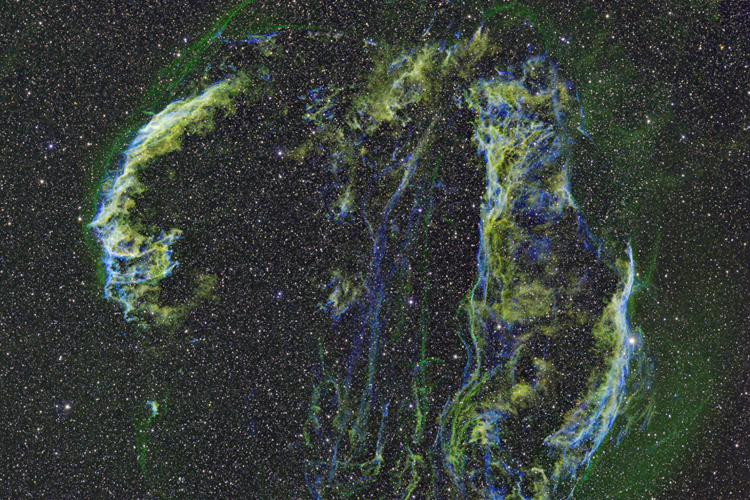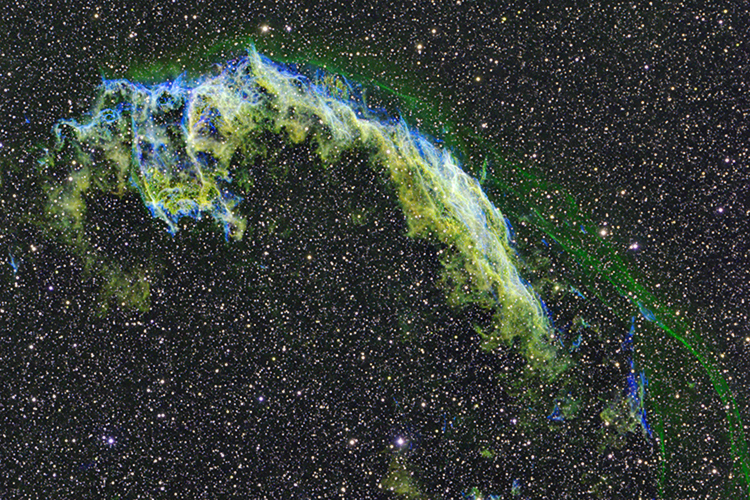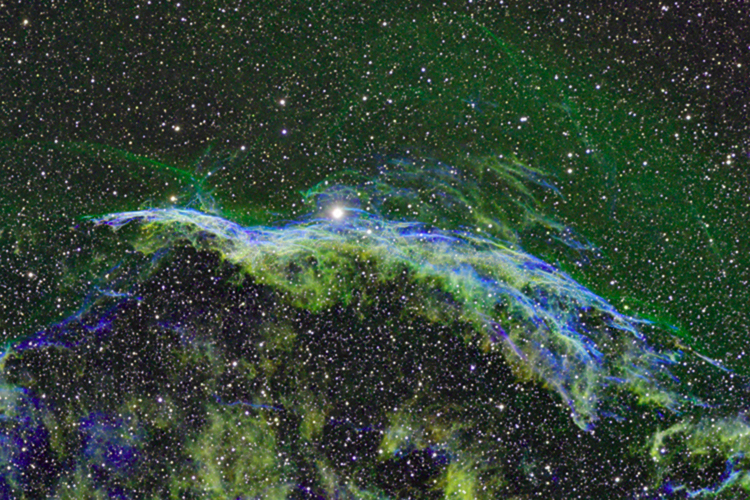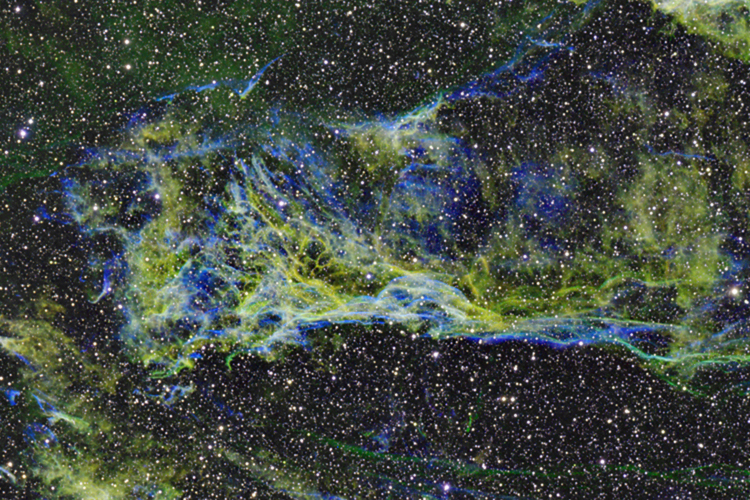|
|
Click the image for a 4.4
arcsec/pixel display (2966 x 2080)
NGC 6992 Eastern Veil...
Click the image for a 4.4
arcsec/pixel display (1500 x 1000)
NGC 6960 The Witch's Broom...
Click the image for a 4.4 arcsec/pixel display (1200 x 800)
Pickering's Triangle...
Click the image for a 4.4
arcsec/pixel display (1200 x 800)
|
Instrument |
Takahashi FSQ-106ED @
f/5.0 (530 mm F.L.) Captured at 3.5 arcsec/pixel. |
|
Mount |
Paramount ME |
|
Camera |
SBIG STL-11000 w/
internal filter wheel, AstroDon 6 nm Filters |
|
Acquisition Data |
8/18/2008
to 9/7/2008 Chino Valley... with CCDAutoPilot3 |
|
Exposure |
SII 240
min. (8 x 30 min. bin 1x1)
Hα
240 min. (8 x 30 min. bin 1x1)
OIII 180 min. (6 x 30 min. bin 1x1)
SII,Ha & OIII are mapped
to RGB respectivly |
|
Software |
CCDSoft,
CCDStack, Photoshop CS w/ the Fits Liberator plugin and Noel Carboni's actions.
CCDStack to calibrate, register,
normalize, data reject & combine.
PhotoShop for
non-linear stretching and the color combine. |
|
Comment |
North is to the top in
the first image.
The colors of the
images on this page closely follow the Hubble Palette. I didn't mess
around with the hue of individual colors for the sake of a "pretty
picture." The presence of sulfur, hydrogen and oxygen are more
clearly shown. Red indicates the presence sulfur, green hydrogen and
blue oxygen. However, it looks like the sulfur is only present where
there is also hydrogen and oxygen, creating the white areas.
These wisps of gas are all that remain visible of a Milky Way star.
Many thousands of years ago that star exploded in a supernova
leaving the Veil Nebula. At the time, the expanding cloud was
likely as bright as a crescent Moon toward the constellation of
Cygnus, visible for weeks to people living at the dawn of recorded
history. The remaining supernova remnant lies about 1400 light-years
away and covers over five times the size of the full Moon. The
bright wisp on the right is known as the Witch's Broom Nebula and
can be seen with a small telescope. The Veil Nebula is also known as
the Cygnus Loop.
Source: NASA
APOD |
|




